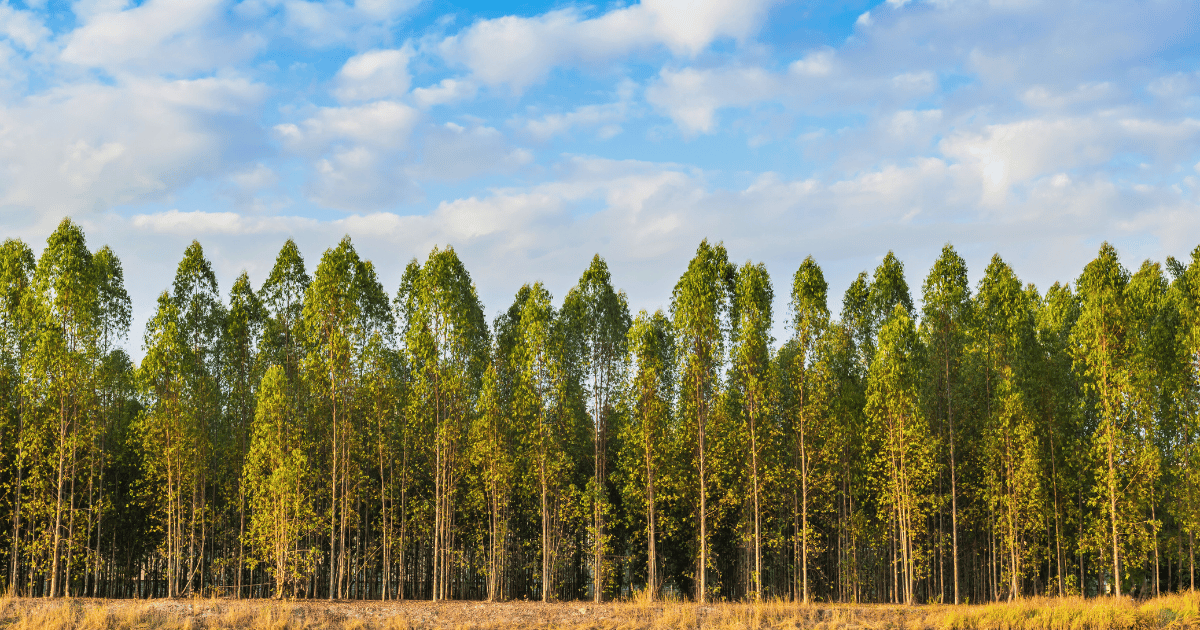The movement toward environmentally conscious buildings has significantly changed structural design in recent years. The LEED green building rating system is now popular nationwide, positively impacting how architects and builders approach projects. Meanwhile, FSC certifications mean woodlot owners, manufacturers, and sellers approach forestry in a responsible and renewable way.
Responsible, renewable materials are integral for keeping our ecosystem intact, including wood products, which I’ll explain more about below.
Sustainable Vs. Renewable Wood Products
It’s important to understand terminology when evaluating wood products.
Sustainable is a word that often describes LEED-suitable products but is relatively vague. The Federal Trade Commission now requires accurate environmental benefit descriptions from companies rather than buzzwords, which benefits consumers.
When sourcing wood products, seek out brands that explain their sourcing and manufacturing impacts rather than loosely labeling products “sustainable.” Some plywood companies do this without detailing what earns that title. When it comes to renewable wood, details matter.
Sustainability refers to replacing resources at the consumption rate, whereas renewable describes quickly regrowing materials like forests after harvesting. For wood, always opt for renewable over sustainable.
Why Renewable Wood Products Are Important
Ideally, construction wood would always be grown, harvested, and manufactured in an eco-friendly way. Irresponsible forestry devastates global forests and jungles. The Forest Stewardship Council (FSC) maintains one of the most important certifications for renewable wood, combating deforestation. FSC estimates that irresponsible forestry causes a large percentage of greenhouse emissions.
Opting for responsible wood reduces emissions while regrowing damaged forests and this starts with getting your wood from businesses that promote responsible forestry practices.
Responsible Forestry and FSC Certifications
FSC certification marks responsible forestry due to strict guidelines. Two types exist:
- Chain of custody for manufacturers/sellers.
- Forest management for woodlot owners.
The chain of custody certification goes to vendors selling consumer goods. FSC-certified products show responsible logging and manufacturing. Meanwhile, the forest management certification goes to logging companies. Buyers sourcing timber for production must verify suppliers have this certification.
Qualifying requires meeting stringent environmental, social, and economic standards, such as the following:
Preserving biodiversity
Avoiding genetically modified organisms
Protecting water quality
Providing fair compensation and reasonable working conditions
Safeguarding Indigenous rights
Maintaining certification means a re-evaluation every five years to prove continuing compliance. This ensures that FSC brands maintain high standards over time.
Types of FSC-Certified Wood Products
Purchasing certified goods encourages vendor adoption of improved practices. Major wood categories for construction should carry FSC certification:
- Lumber: All solid wood should be certified — things like dimensional boards and timber.
- Engineered Wood: Binders used must meet health standards, as should plywood, OSB, glulams, and more.
- Flooring: This includes materials like hardwood, laminate, bamboo, and cork. Floor adhesives and coatings should avoid hazardous ingredients.
- Furnishings: All doors, cabinets, furniture, and finishes must meet VOC regulations.
- Paper: Office products like copy paper also qualify to complete the lifecycle responsibly.
So, Are Renewable Wood Products Worth It?
Incorporating FSC wood and paper minimizes environmental impacts in a meaningful way. Responsible forestry preserves nature, tackles pollution and climate change, and uplifts communities economically.
Though certified materials may initially cost more, the benefits make the premium worthwhile. A relatively small investment contributes to restoring ecosystems. Conscientious builders drive responsible forestry so it can become an industry norm.
Product decisions depend on needs and budgets. Not every wood component requires certification. But sourcing responsibly when possible sustains momentum for this crucial movement. Our forests support life, and constructing eco-friendly buildings starts with preserving that foundation.
FAQs About Renewable Wood Products
Why does responsible forestry matter if trees regrow anyway?
Irresponsible deforestation clears large areas, completely destroying habitats and releasing carbon rapidly. Responsible forestry selectively harvests mature timber rotationally so ecosystems remain intact.
Aren't strict forestry regulations enough to ensure sustainable practices?
Government policies often fail to adequately protect the global environment. FSC maintains consistent international standards, often surpassing local legal preservation requirements. Voluntary certification makes businesses accountable beyond basic compliance.
Isn't it expensive and inconvenient to use FSC wood?
Certified products generally carry only a small price premium, which decreases with rising demand. Some initial costs fund better practices, but the societal value is tremendous. Supply chain availability also minimizes operational impacts.
Can any wood be FSC-certified?
FSC only certifies well-managed natural forests and plantations meeting standards. Logging in conservation zones is prohibited. Some species in some areas may not yet qualify for pending reforms. However, the scope expands continually to qualified sources.
Are alternative eco-certifications as reliable as FSC?
No certification is perfect. However, the FSC remains most trusted given its independence and comprehensive requirements versus narrower, less consistently verified programs.












